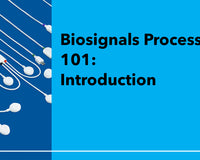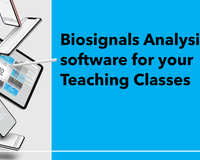Wearable devices have revolutionized health and fitness tracking, providing real-time insights into our physiological well-being. From monitoring heart rate to detecting stress levels, biosignal sensors are at the core of these innovations.
But with so many options available, how do you choose the right sensors for your wearable health technology? This guide breaks down the best biosignal sensors for wearables and the key factors to consider when building the perfect device.
The Rise of Wearable Devices in Fitness and Healthcare
Wearables have expanded from step counters to sophisticated health monitors capable of tracking heart activity, brainwaves, and even muscle movement. They’re now a staple in fitness, medical diagnostics, and rehabilitation, offering convenience and accuracy in compact forms. The choice of sensors is critical to ensuring your wearable device delivers reliable, actionable data.
PPG Sensors: Ideal for Heart Rate and Stress Monitoring
Photoplethysmography (PPG) sensors use light to measure blood volume changes in the skin, making them perfect for:
- Heart Rate Monitoring: Reliable tracking during exercise or daily activities.
- SpO2 Measurement: Essential for monitoring oxygen levels in fitness and clinical applications.
- Stress Monitoring: By analyzing heart rate variability, PPG sensors provide insights into stress and relaxation states.
PPG sensors are compact, cost-effective, and widely used in smartwatches and fitness trackers.
EMG Sensors: For Muscle Activity and Rehabilitation
Electromyography (EMG) sensors measure the electrical activity of muscles, making them invaluable for:
- Rehabilitation Devices: Tracking muscle recovery and activation during therapy.
- Prosthetics: Enabling intuitive control by detecting muscle signals in real time.
- Sports Performance: Helping athletes optimize muscle engagement and avoid injuries.
Wearable EMG sensors are increasingly popular in physical therapy and sports science.
EEG Sensors: Unlocking Neurofeedback Wearables
Electroencephalography (EEG) sensors monitor brainwave activity, opening doors to:
- Neurofeedback Training: Used in mental health applications for focus and relaxation improvement.
- Sleep Tracking: Understanding sleep cycles for better rest management.
- Gaming and VR Applications: Enabling immersive experiences through brainwave-based controls.
EEG sensors in wearables are gaining traction in both clinical and consumer markets.
Factors to Consider for Wearable Devices
- Battery Life: Sensors must consume minimal power to ensure long-lasting usage without frequent charging.
- Size and Weight: Compact and lightweight sensors improve user comfort, especially for prolonged wear.
- Data Connectivity: Bluetooth or wireless compatibility is essential for seamless data transfer to apps or cloud storage.
- Durability: Sensors should withstand movement, sweat, and environmental factors for reliable performance.
By considering these factors, you can design wearables that are both functional and user-friendly.
Conclusion
Selecting the right biosignal sensors is crucial for developing wearable devices that meet modern health and fitness demands. PPG sensors excel in tracking heart rate and stress, EMG sensors are perfect for muscle activity monitoring, and EEG sensors offer innovative applications in neurofeedback. Combining these technologies with thoughtful design ensures your wearable device stands out in a competitive market.
Start building smarter wearables with our cutting-edge biosignal sensors!










